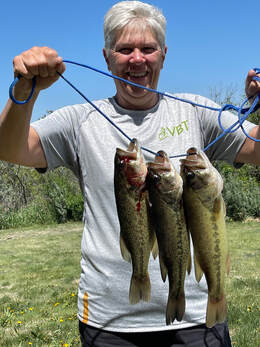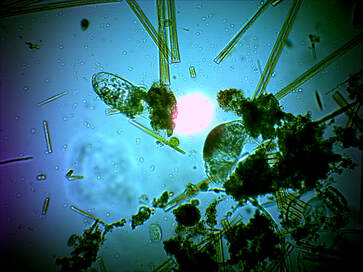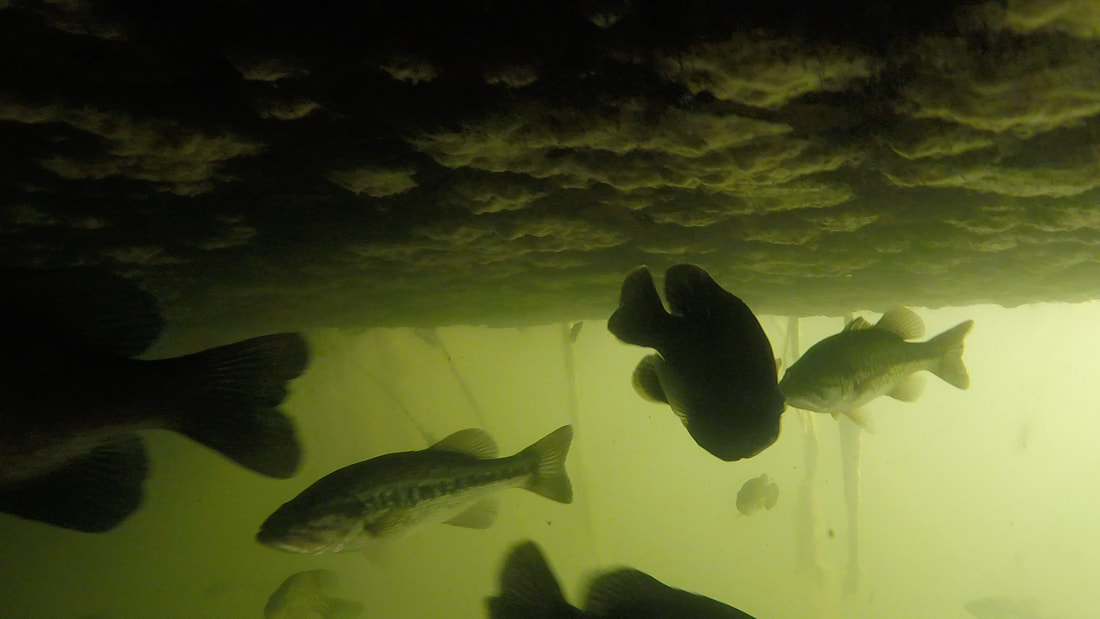Fishing for bass among BioHavens is an exciting strategy for algae reduction on Fish Fry Lake
We moved up a narrow channel on Fish Fry and hooked and landed seven fish in the space of a hundred yards. These included females heavy with eggs…three- and four-pound fish. Releasers. And there was the mixed age group, fifteen inches or less, the keepers. The fillets that will sustain us and our paleo diet for the next nine months, or more. Alarmingly we also saw carp. We’ve avoided them to date, but now they’re here, they and their life model. These filter feeders that stir up the bottom add one more dimension to the stewardship of Fish Fry Lake. But they will also be good eating. Carp, the most popular freshwater game fish on the planet, but not so much here in the U.S.. But we will transition, and figure out a way to leverage the carp, a large minnow that grazes periphyton directly, into our stewardship thinking. Maybe even into our diet? After all, Fish Fry Lake, and what comes out of it, is water that I know and trust. The winter has been inordinately dry and warm, so Fish Fry was actually mostly open until a cold spell finally hit in early February. This meant that the lake lost more water than normal through evaporation: it went down at least four feet. But now with the recharge of water from the spiral wetland, an eighty-acre wetland filter that feeds over 300 million gallons of water into and through the lake annually, Fish Fry is back to full pool. And our mission to demonstrate that agricultural nutrients can be cycled into fish, instead of algae, is back too. What a blast! Fishing is research! Critical research that demonstrates a sustainable model, one that bumps up actual quality of life. This becomes absolutely apparent as I witness bass after bass being hooked, played, sometimes lost and other times boated. The action and the thrill are energizing! BioHaven floating islands concentrate nature’s wetland effect. They are floating biofilm reactors; they concentrate biofilm reactive surface area. They are, just like the plastic worms we fish, made of recycled plastics, but with a 60-year design life. Unlike other floating treatment wetland designs, BioHavens do not break down and use up dissolved oxygen in the process. They do not contribute to Biological Oxygen Demand (BOD) like jute or other short term floating islands do, but instead they function as perennial concentrated wetlands, and cycle excess nutrients into periphyton and then fish.
After many years of research, trial, error and abundant help from nature, we have learned stewardship wisdom, acquired hard-earned data and knowledge. We understand how we can grow fish instead of algae. We’ve paid our dues. Now, with strategic investment, we are poised to generate revenue on water with FPV (floating photovoltaics), while stewarding that water towards health. Towards water clarity and quality. It won’t be long before all of us will want, even “require”, or own solar charging stations. Plug the vehicle in overnight, so we are good for another couple hundred miles tomorrow. No waiting around. No fuss. Plug and play!
It’s hard to worry too much about politics and their machinations, while hauling and heaving in battle with a six pound bass! I’m sure of one thing…the bass doesn’t care. Its focus is so very different…food! Sex! More food!
As we commercialize the process of caring for our water, it’s important to remind ourselves that we are just caretakers. We are here for a while, and our job is to do well. And we all know in our gut what that means. It’s not a mystery. It is stewardship.
1 Comment
1/5/2024 06:14:09 am
The content is thought-provoking and sparks meaningful discussions. It encourages critical thinking.
Reply
Leave a Reply. |
AuthorWrite something about yourself. No need to be fancy, just an overview. Archives
August 2023
Categories
All
|



 RSS Feed
RSS Feed